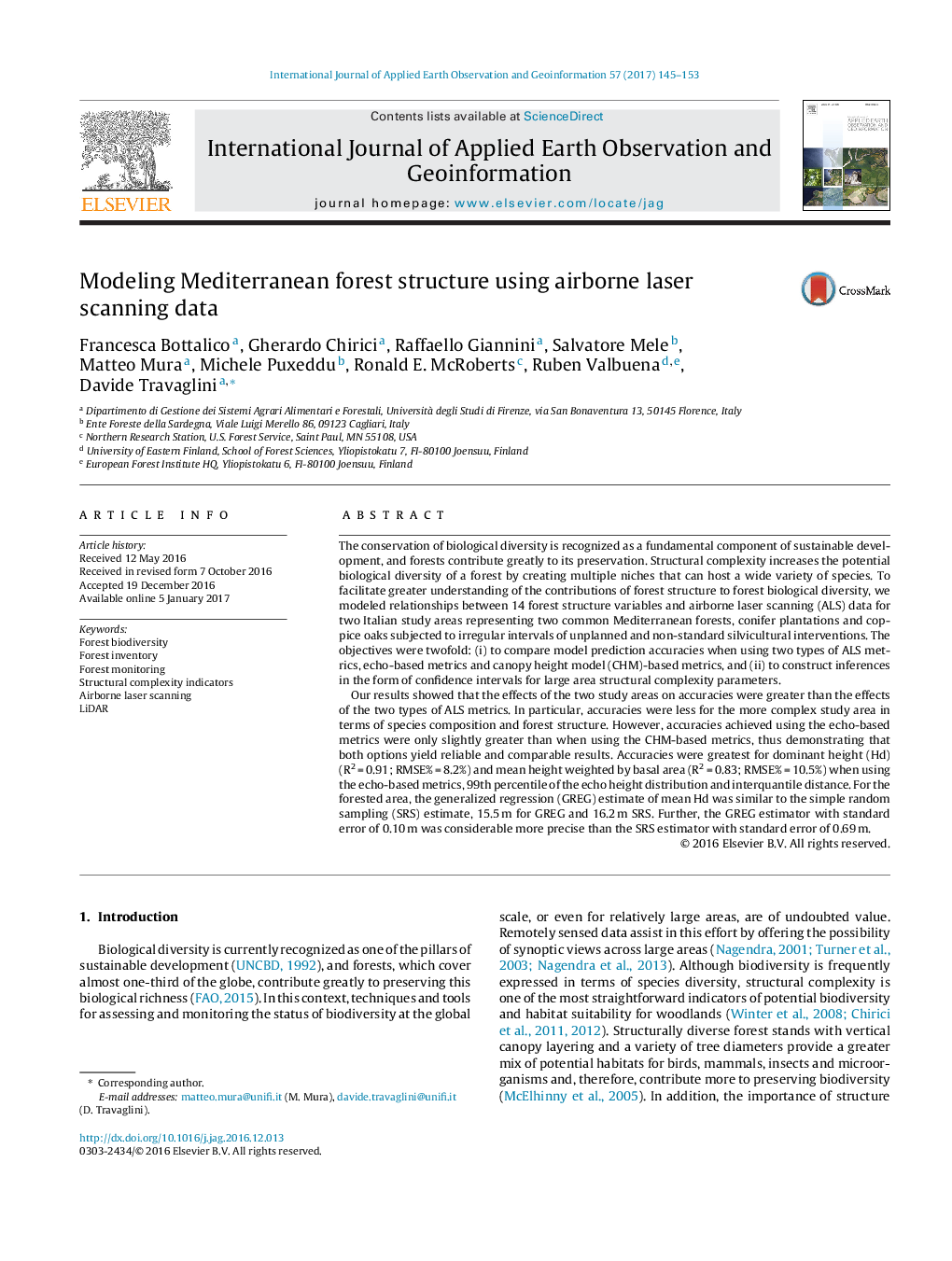| Article ID | Journal | Published Year | Pages | File Type |
|---|---|---|---|---|
| 5755559 | International Journal of Applied Earth Observation and Geoinformation | 2017 | 9 Pages |
Abstract
Our results showed that the effects of the two study areas on accuracies were greater than the effects of the two types of ALS metrics. In particular, accuracies were less for the more complex study area in terms of species composition and forest structure. However, accuracies achieved using the echo-based metrics were only slightly greater than when using the CHM-based metrics, thus demonstrating that both options yield reliable and comparable results. Accuracies were greatest for dominant height (Hd) (R2Â =Â 0.91; RMSE%Â =Â 8.2%) and mean height weighted by basal area (R2Â =Â 0.83; RMSE%Â =Â 10.5%) when using the echo-based metrics, 99th percentile of the echo height distribution and interquantile distance. For the forested area, the generalized regression (GREG) estimate of mean Hd was similar to the simple random sampling (SRS) estimate, 15.5Â m for GREG and 16.2Â m SRS. Further, the GREG estimator with standard error of 0.10Â m was considerable more precise than the SRS estimator with standard error of 0.69Â m.
Related Topics
Physical Sciences and Engineering
Earth and Planetary Sciences
Computers in Earth Sciences
Authors
Francesca Bottalico, Gherardo Chirici, Raffaello Giannini, Salvatore Mele, Matteo Mura, Michele Puxeddu, Ronald E. McRoberts, Ruben Valbuena, Davide Travaglini,
